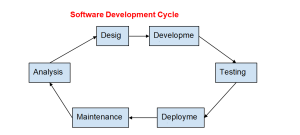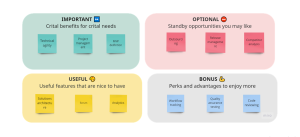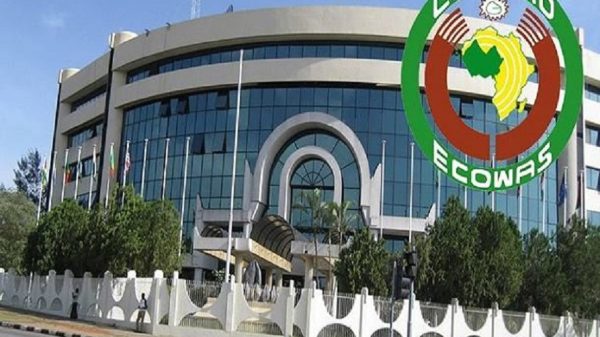By: Prince Osinachi Nchiba
When we think of speeding up software development for a startup, what do we think about?
-Do we think about the ability to ship features faster?
-Do we think about the growth of the team members?
-Or do we think about the speed of the software itself?
There are so many answers to these questions. However, as an expert in this field, I would state my position. Here is what I think:
Software development is quite important to a startup. Speeding up software development entails building the entire framework that will guarantee the prompt delivery of features that will ensure product success. This is inclusive of team development and resource management.
Before we continue to dig deeper, it is important we access the software development life cycle of a product.

To speed up software development, it is important to access the components of the software development lifecycle and improve it from there.
Analysis:
This is the point where the research is carried out on product feasibility. At this point, all the critical stakeholders are consulted. The requirements are gathered and prioritized by the team, and features in the backlog are also re-ordered. The critical stakeholder on this stage are the users.
How can this process be developed:
Since analysis is part of the development cycle, to speed it up, we need to look at the following:
● Allow the requirement gathering process to happen in parallel with other sprints so that the engineering process need not be stopped when the analysis is being carried.
● Use the voting or card system to manage the preferences of stakeholders. Without this being done, there could be chaos as a result of the clash of preferences among stakeholders.
● Prioritise the requirements that will be fed into the engineering process. This speeds up the time required for software development by 50%.
Design
This design stage involves the process of building the flows, high-fidelity wireframes and the architecture design that are required for the engineering sprint. The critical stakeholder at this stage is the solutions architect. The design stage is an input to the core of software engineering process and it help prevent a lot of errors.
How can this process be developed:
To drive software development speed, the following needs to be considered at the design stage:
- The precise architectural design tools should be used. This saves the software development time by a large margin.
- There should be proper documentation of this process, so that it can be re-used as a template in the future
- The input required for the design process should be readily available (e.g Product Requirement Document).
Development
This is the most crucial of all the stages as it involves the active coding process. At this point, the frontend engineers collaborate in converting the user interface into actual screens. The backend engineers also work on the server side of the project, they build the endpoints and APIs required for the product to function well.
How can this process be developed:
For effective time management, the following needs to be done at this stage:
-There should be a project management tool for effort estimation, task execution and roadmapping. This will help keep the team organized.
-There needs to be a DevOps engineer that helps to manage the infrastructural needs of the developers. This will help save the engineering development time by 35%.
Testing
At this stage, the testing of what has been developed commences. The most important stakeholder here are the QA testers. The software is tested for bugs, latency, among many other things.
The product manager also tests the platform to be sure that what was intended is what is built based on the requirements document. The product manager also tests the flow end-to-end.
How can this process be developed:
- The use of testing tools can help speed up this phase (as the testing tool serves as a documenter and analysis tool).
- When testing, the core MVP capabilities need to be prioritised.
- There should be a standby set of user testers.
Deployment & Maintenance
These stages involve the release of the software to a live or test environment. It also involves the refining and maintenance of the product after it has been released. All the stakeholders play a role at this stage. This is also the stage of final approval where what has been developed is reviewed and shipped.
How can this process be developed:
For speed, the following options can be leveraged:
The stakeholders should be consulted before the deployment stage, the stakeholder buy-in is very crucial to the eventual release of the product. If they are consulted, the engineering time would be reduced by a large margin.
What other tips are there?
Beyond the software development cycle, there are some other external-related factors that can be crucial to the speed of software development and delivery. They are highlighted below:

The diagram above shows some other activities that are central to achieving the milestones of speeding up the software development processes.
1) Technical agility: It is important for the software development cycle to be agile and iterative.
2) Project management: Development speed is also attained when there is effective task management. I have seen this work over the years of experience of my work.
3) MVP definition: Another critical aspect is defining the Minimum Valuable Product features from the get-go. Having a focus improves speed.
4) Solutions architecture: When architecture is properly built, it is easy to build on it.
5) Analytics: Keeping track and measuring all the segments within the engineering process is quite important. It helps in knowing what to optimise.
6) Code review: It is important to review the codes often, to prevent latency. Also, using platforms like Github allows you to see the code merges and resolve conflicts if it arises.
7) Outsourcing & Recruitment: Finally, when there is low human capital on the ground, it is crucial to either hire more or outsource to external people. This is a sure way to speed up engineering timing.
![]()

























































